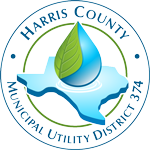What are freezing temperatures?
When approaching winter in Texas, it can be uneventful as our winters tend to be somewhat mild in our area. Nevertheless, we do still have the chance of a detrimental cold front and we must be prepared. When talking about winter with Inframark, we take the WHAT, WHEN, WHERE and HOW approach on our facilities. So, what are freezing temperatures? Technically freezing temperatures are when the air reaches 32 degrees Fahrenheit. However, it is typically uncommon to see damage to pipes or facilities if the temperature drops down to 32 degrees and doesn’t stay there for a long period of time. When the temperature reaches 30 degrees or below and stays for just a few hours, it can cause the pipes to freeze, damage irrigation equipment and cause control failures at many different levels. Additionally, there can be latent damage which doesn’t show immediately. An example of this would be galvanized pipes. While the pipe may not burst, expansion can occur separating the galvanizing from the pipe creating an area for corrosion to start and ultimately cause leaks.
When do you prepare for a freeze?
That question is probably the hardest to answer in our area. At Inframark, we do an annual freeze protection audit starting in the Fall. We also do periodic checks as winter continues, since it may actually be months before the cold weather makes its way to our area. It is always the best practice to make sure the preventive measures taken are in good condition throughout the winter. With preparations in place and a cold front approaching, the weather should be monitored regularly to determine arrival time, anticipated temperatures and duration of temperatures below freezing.
Where should we have freeze protection?
This is the easiest question, everywhere! We don’t believe you can prepare enough for a winter freeze. The potential loss and damage due to a freeze can be extremely costly. Your outside spigots should be covered and insulated along with any other pipes directly exposed to freezing temperatures. This also includes pipes in the attic, garden hoses, irrigation lines and irrigation system backflow preventers. The lines outside exposed to the air are the most common areas to see damage. It is not uncommon for our Inframark team to turn the water off to hundreds of broken backflow preventers in the residential communities after a big freeze. Typically, pipes in the home are fairly safe with heaters running.
How do we prepare for the freeze?
There are many different methods and materials which can be utilized to make sure you are safe from freeze damage. Some of these are: foam and fiberglass insulation sized for specific pipes and secured with vinyl and plastic tape, prefabricated spigot covers, spray foam insulation, heat tape, heat lamps and portable heaters. Almost all building supply stores have these items, but do not wait until the night before because they are known to sell out. Should supplies be unavailable, one can improvise, such as utilizing towels and duct tape to insulate vulnerable areas. Turning off the water and draining the lines is the most reliable way to prevent freeze damage. This should always be done for backflow preventers and irrigation systems; however, most everyone needs to have potable water inside the house while it is occupied, so turning off the water and draining the lines is not an option. It is also best practice to periodically flush the lines through all fixtures inside the house during a freeze to bring fresh water into all the lines. This will prevent the water from expanding and breaking the pipes during the freeze. Space heaters, heat lamps and heat tape can be used for small areas directly exposed to freezing temperatures, but care should be taken with any device using extension cords.
Everyone at Inframark will be ready for a freeze and we recommend you are as well.

